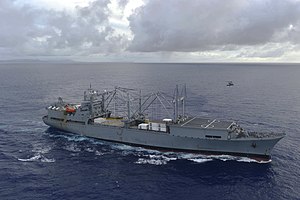
SS Gopher State (T-ACS-4) is a crane ship in ready reserve for the United States Navy. The ship was named for the state of Minnesota, which is also known as the Gopher State.

SS Flickertail State (T-ACS-5) is a crane ship in ready reserve for the United States Navy. She is stationed at Newport News, Virginia and is in ready reserve under the Military Sealift Command (MSC). The ship was named for the state of North Dakota, which is also known as the Flickertail State.

The Gopher State-class crane ships of the United States Navy are a class of auxiliary vessels. The lead ship of the class is named in honor of the state of Minnesota. Original United States Maritime Administration (MARAD) designation for the ship is C5-S-73b.
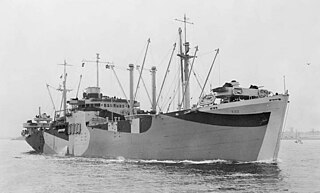
Type C1 was a designation for cargo ships built for the United States Maritime Commission before and during World War II. Total production was 493 ships built from 1940 to 1945. The first C1 types were the smallest of the three original Maritime Commission designs, meant for shorter routes where high speed and capacity were less important. Only a handful were delivered prior to Pearl Harbor. But many C1-A and C1-B ships were already in the works and were delivered during 1942. Many were converted to military purposes including troop transports during the war.
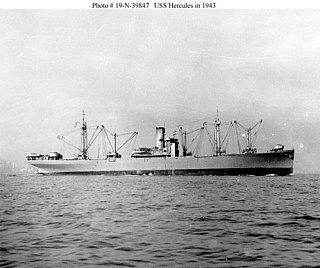
Type C3-class ships were the third type of cargo ship designed by the United States Maritime Commission (MARCOM) in the late 1930s. As it had done with the Type C1 ships and Type C2 ships, MARCOM circulated preliminary plans for comment. The design presented was not specific to any service or trade route, but was a general purpose ship that could be modified for specific uses. A total of 162 C3 ships were built from 1939 to 1946.
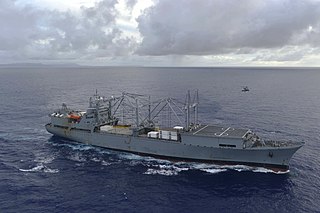
SS Curtiss (T-AVB-4) is one of two Wright-class aviation logistics support ship converted for the Military Sealift Command by Todd Shipyards in 1987.

The Type C4-class ship were the largest cargo ships built by the United States Maritime Commission (MARCOM) during World War II. The design was originally developed for the American-Hawaiian Lines in 1941, but in late 1941 the plans were taken over by the MARCOM.
SS Mormacland may refer to one of several Type C3 ships built for the United States Maritime Commission on behalf of Moore-McCormack Lines:
SS Sea Panther may refer to one of several Type C3 ships built for the United States Maritime Commission:
SS Sea Hound may refer to one of several Type C3 ships built for the United States Maritime Commission:
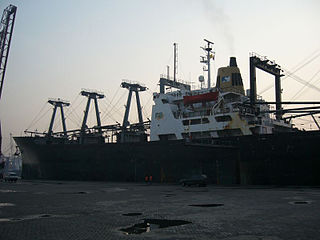
SS Wilson was a steam-powered general cargo ship owned by the American company Sealift Incorporated. The ship's keel was laid in 1968, and it was delivered in 1969. Registered under the US flag, its port of registry is Dover, Delaware. The ship was known as Hong Kong Mail until 1978, then President Wilson until 1987, and Sue Lykes until 1995. Its IMO number is 6909911 and its call sign is WNPD. She was classed as a Type C5 class ship, type C5-S-75a. SS Wilson and other C5-S-75a ships were built by Newport News Shipbuilding & Drydock Company at Newport News, Virginia for the American Mail Line of Seattle, Washington. C5-S-75a ships were built as break bulk cargo or Container ship, with 21,600 shp at 15,950 tons and a max speed of 21.0 knots. Theses were the largest general cargo liners at its time in 1969.
Five ships of Moore-McCormack have borne the name Mormacsun

The SS Carroll Victory was the twenty-seventh Victory ship built during the World War II under the Emergency Shipbuilding program. shewas launched by the California Shipbuilding Company on June 13, 1944, and completed on August 31, 1944. The ship was named after Carroll, Iowa. The ship’s United States Maritime Commission designation was VC2-S-AP3 with a hull number 27 (V-27). shewas operated by the Lykes Brothers Steamship Company and sheserved in the Atlantic Ocean during World War II. The Carroll was one of the new 10,500-ton class ship known as Victory ships that were designed to replace the earlier Liberty Ships. Unlike Liberty ships, Victory ships were designed to last longer and serve the US Navy after the war. The Victory ships differed from Liberty ships in that they were faster, longer and wider, taller, had a thinner stack set farther toward the superstructure, and had a long raised forecastle.

SS Colby Victory was the 84th Victory ship built during World War II under the Emergency Shipbuilding program. She was launched by the California Shipbuilding Company on January 27, 1945, and completed on March 12, 1945. The ship’s United States Maritime Commission designation was VC2- S- AP3, hull number V50, built in 83 days. SS Colby Victory served in the Pacific Ocean during World War II. The 10,500-ton Victory ships were designed to replace the earlier Liberty ships. Liberty ships were designed to be used just for World War II. Victory ships were designed to last longer and serve after the war. The Victory ship differed from a Liberty ship in that they were: faster, longer and wider, taller, a thinner stack set farther toward the superstructure and had a long raised forecastle.

The SS Claremont Victory was the 18th of 531 Victory ships built during World War II. She was built in the Oregon Shipbuilding Corporation shipyard in 1944. She served during the Battle of Okinawa. After the war, she was owned by a number of merchant shipping companies in Argentina before being scrapped in 1978.

SS Oshkosh Victory was a United States Victory ship which entered service in the Pacific Ocean shortly after the end of World War II. The ship's US Maritime Commission designation was VC2-S-AP3, hull number 808 (V-808). The ship was built at the California Shipbuilding Yard (Calship) in Los Angeles, California and was delivered on September 10, 1945. SS Oshkosh Victory was the 808th of the new 10,500-ton class ships known as Victory ships. SS Oshkosh Victory was built in 96 days, under the Emergency Shipbuilding program.

The Type L6 ship is a United States Maritime Administration (MARAD) designation for World War II as a Great Lakes dry break bulk cargo ship. The L-Type Great Lakes Dry Bulk Cargo Ships were built in 1943 to carry much-needed iron ore from the upper Great Lakes to the steel and iron production facilities on Lakes Erie and Ontario in support of the war effort. The ships have a 15,675 tonne deadweight tonnage. The L6 ships were built by two companies: American Ship Building Company, in the case of the type L6-S-A1 models, of which 6 were built; and Great Lakes Engineering Works, Ashtabula, Ohio/ Great Lakes Engineering Works, River Rouge, Michigan, in the case of the type L6-S-B1, which produced 10 ships. Steel supply needed for World War was great. To supply iron ore from Lake Superior to steel foundries, the United States Commission had a series of L6 Lakers ship built. The Maritime Commission ordered ten Great Lakes Bulk Carriers of the L6-S-B1 type. The L6-S-B1 was design with a 3-cylinder triple expansion steam engines. The L6-S-A1 used a lentz 4-cylinder compound engine. All L6 ships were coal burning and delivered between May and November 1943. L6-S-B1 was built for the US Maritime Commission under USMC contract MCc-1834 in 1943 at the River Rouge yard. Each L6 ship cost $2.265 million. The first L6-S-B1 was the SS Adirondack/Richard J. Reiss, hull 290, keel was laid on March 9, 1942 and launched on September 19, 1942. The ships are often called the Class Lake Bulk Freighter now.

The Type R ship is a United States Maritime Administration (MARAD) designation for World War II refrigerated cargo ship, also called a reefer ship. The R type ship was used in World War II, Korean War, Vietnam War and the Cold War. Type R ships were used to transport perishable commodities which require temperature-controlled transportation, such as fruit, meat, fish, vegetables, dairy products and other foods. The US Maritime Commission ordered 41 new refrigerated ships for the US Navy. Because of the difficulty of building refrigerated ships only two were delivered in 1944, and just 26 were delivered in 1945 and the remainder in 1946–48. The 41 R type ships were built in four groups. Two of design types were modified type C1 ships and two were modified type C2 ships. The United Fruit Company operated many of the R type ships in World War II. The type R2-S-BV1 became the US Navy Alstede-class stores ship and the type R1-M-AV3 became the US Navy Adria-class stores ship.

SS India Victory was a Victory ship built and operated as a cargo carrier and troopship in World War II. After the war the ship was used a private cargo ship. She sank on 12 July 1972, ran aground on a Pratas Reef in the South China in Typhoon Susan.

The SS Lewiston Victory was a Victory ship built during World War II. It was built in the Oregon Shipbuilding Corporation shipyard in 1944. It served during the Battle of Okinawa as a troop transport. Its hull number was 1202 and MV number 148 and MO/Off. no.: 247076. Lewiston Victory was converted to a troopship and used to bring troops home as part of Operation Magic Carpet. Lewiston Victory was operated by Pacific-Atlantic Steamship Company under charter with the Maritime Commission and War Shipping Administration.
